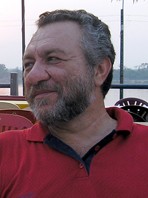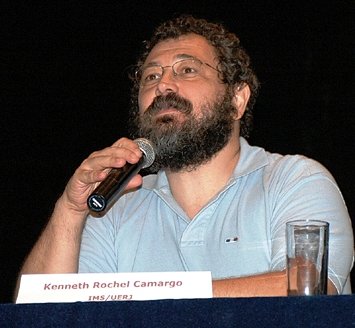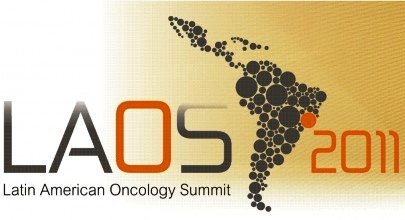Lesões na medula
Apesar da intensificação de campanhas na mídia, os acidentes de trânsito continuam fazendo vítimas, que, quando não-fatais, podem apresentar quadros irreversíveis, como é o caso de pacientes com lesões medulares.
"É preciso empregar leis mais incisivas para evitar esses acidentes, pois eles mudam totalmente a vida desses pacientes, causando graves danos emocionais e financeiros para a família, para o governo e para o próprio paciente", diz a cirurgiã em pés e tornozelos Cíntia Kelly Bittar, da Unicamp.
Ela afirma que a maioria dos pacientes medulares acaba entrando em depressão, pois não tem estrutura familiar, financeira e emocional para se reabilitar.
Estimulação elétrica neuromuscular
Em sua pesquisa, Cíntia avaliou um grupo de 60 pacientes submetidos à técnica de estimulação elétrica neuromuscular (EENM) que busca melhorar as condições de vida de pacientes paraplégicos e tetraplégicos.
A nova técnica, testada no Laboratório de Biomecânica de Reabilitação, coordenado pelo bioengenheiro Alberto Cliquet Júnior, orientador de Cíntia, já teve sucesso no tratamento de dois pacientes, que voltaram a andar.
De acordo com os resultados da pesquisa de Cíntia, além de permitir a locomoção, a técnica de estimulação elétrica melhorou o sistema músculo-esquelético e sistema gastrointestinal de pacientes avaliados pela cirurgiã.
Benefícios para os pacientes
Os pacientes avaliados durante a pesquisa melhoraram a posição do pé, a qualidade óssea, o equilíbrio, o sistema respiratório e cardíaco, segundo a médica.
Ela esclarece que a posição ortostática e a movimentação permitida pela técnica beneficiam principalmente o sistema músculo-esquelético.
"Ocorre melhora da rigidez articular, das deformidades nos pés e nos tornozelos e da osteoporose, o que possibilita a estes pacientes manterem seus pés e tornozelos na posição plantígrada, auxiliando novas técnicas de reabilitação, evitando complicações frequentes como úlceras por sobrecarga, artropatia de Charcot (consequente a microtraumas repetitivos), acentuação de deformidades pelos desequilíbrios musculares e fraturas pela baixa densidade óssea destes pacientes," explica a médica.
Com os estímulos, o espasmo que geralmente o paciente tem nos pés diminuiu e a sensibilidade dos membros inferiores ao toque melhorou, segundo Cíntia.
De acordo com Cíntia, que restringiu sua pesquisa à análise de pés e tornozelos, o tratamento mostra-se melhor em relação à cirurgia, pois os pacientes medulares apresentam uma osteoporose intensa, o que obriga a retirada óssea em maior quantidade para corrigir os pés, sendo que a chance de não consolidar é grande.
"Por isso os pacientes sem deformidades não necessitam de cirurgias ortopédicas em seus pés, pois se apresentam plantígrados pela eletroestimulação. Se forem desenvolvidas técnicas para voltar a andar, estes pacientes estão aptos, não necessitando de cirurgias para correção dos pés".
Apesar de oferecer novas possibilidades ao paciente medular, infelizmente a técnica não se aplica a todos os casos.
Contra-indicações
Para realizar o tratamento, o paciente não pode ter problema cardíaco, respiratório e nem sequela de fraturas, pois quando há deformidades associadas em membros inferiores, o paciente não tem como aproveitar a reabilitação para ficar de pé. "Eles precisam ter boas condições clínica e músculo-esquelética. É necessária uma triagem prévia", acrescenta Cíntia.
Algumas condições sociais também afastam alguns pacientes do tratamento, segundo Cíntia. "Não são todos que têm condições de vir semanalmente para seguir o tratamento corretamente. Muitos abandonam o tratamento porque não apresentam disponibilidade para alguém acompanhá-los.
Eletroestimulação
A eletroestimulação, segundo a cirurgiã, consiste no estímulo do nervo, o que possibilita que pacientes que não tenham uma lesão completa dos nervos possam voltar a andar, como foi o caso dos dois pacientes do ambulatório. As atividades realizadas duas vezes por semana fazem com que a pessoa diminua as contraturas musculares dos pés.
De forma mais didática, ela acrescenta que um estimulador principal faz conexões dos músculos quadrícepes e tibial anterior, estimulando os pacientes a iniciarem alguns movimentos de passos. Segundo a cirurgiã, os pacientes paraplégicos usam andador e os tetraplégicos, suporte de suspensão para poderem fazer a locomoção com esteira.
Poucos são os ambulatórios de reabilitação no Brasil e, segundo Cíntia, entre esses, poucos utilizam a eletroestimulação como tratamento. O tratamento deve ser contínuo para que nos primeiros meses os pacientes apresentem só o estímulo e depois de seis meses comecem a ficar de pé, segundo a cirurgiã.
O tratamento envolve uma equipe multidisciplinar composta de fisioterapeutas, psicólogos e urologistas, pois muitos pacientes, segundo Cíntia, usam sonda permanentemente.

 Gastão Wagner de Souza Campos, Conselheiro da Diretoria da ABRASCO, será o relator geral da
Gastão Wagner de Souza Campos, Conselheiro da Diretoria da ABRASCO, será o relator geral da  O vice-presidente da
O vice-presidente da  O vice-presidente da
O vice-presidente da  Estão abertas as inscrições para a primeira edição do Prêmio Pró-Equidade em Saúde, promovido pelo Conselho Nacional de Secretarias Municipais de Saúde (
Estão abertas as inscrições para a primeira edição do Prêmio Pró-Equidade em Saúde, promovido pelo Conselho Nacional de Secretarias Municipais de Saúde ( The
The 

